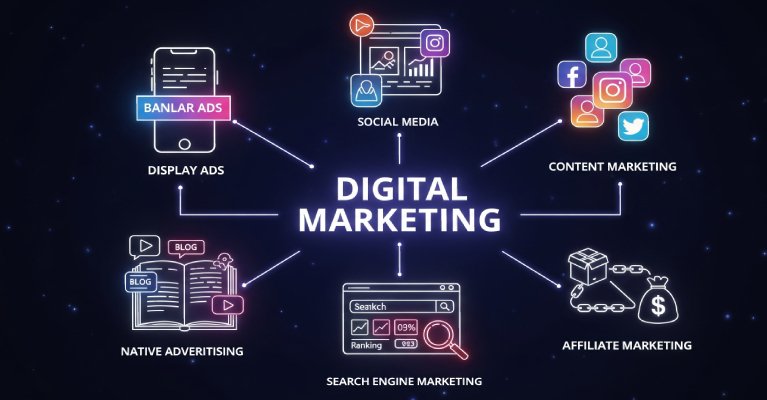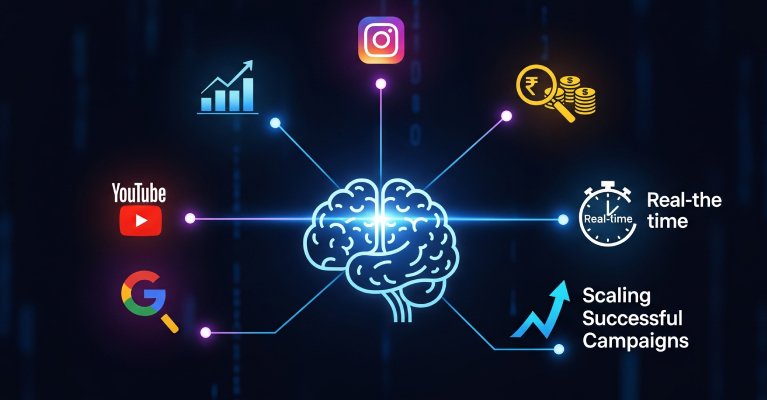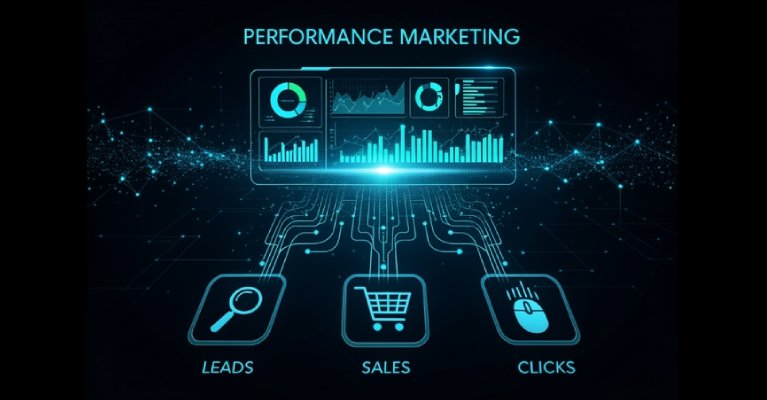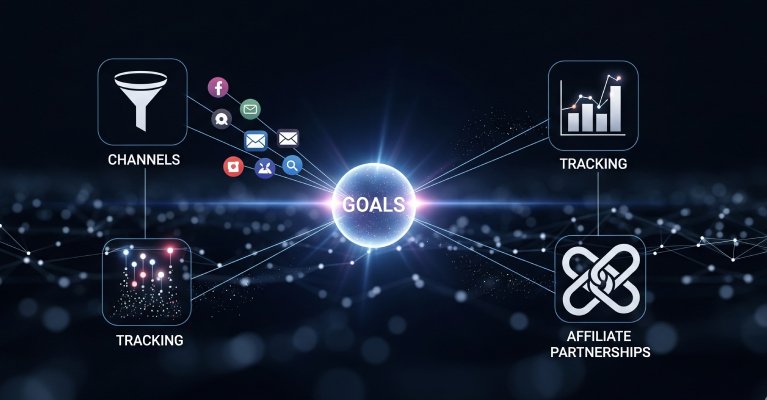Performance Marketing at AdsVentures
Instead of only providing a small selection of services, AdsVentures provides a wider range of services that are more flexible to meet shifting market demands:
| What Others Offer | What AdsVentures Offers |
|---|---|
| They follow a fixed procedure and service technique. | But we increased adaptability in performance-based strategy switching, which provides affordable plans |
| Others increase prices because of overhead expenses. | We offer budget-friendly plans, including subscription-based models. |
| Restricted availability of subject-matter professionals and experts | Access to a broad network of elite talent and marketing know-how. |
| They lag in accepting new tools and technologies. | For improved outcomes, we fully embrace cutting-edge AI, technology, and digital platforms. |

Mobile Application
Lorem ipsum dolor sit amet, consectetur adipiscing elit. Ut elit tellus, luctus nec ullamcorper mattis, pulvinar dapibus leo.

Mobile Application
Lorem ipsum dolor sit amet, consectetur adipiscing elit. Ut elit tellus, luctus nec ullamcorper mattis, pulvinar dapibus leo.

Mobile Application
Lorem ipsum dolor sit amet, consectetur adipiscing elit. Ut elit tellus, luctus nec ullamcorper mattis, pulvinar dapibus leo.

Mobile Application
Lorem ipsum dolor sit amet, consectetur adipiscing elit. Ut elit tellus, luctus nec ullamcorper mattis, pulvinar dapibus leo.
What is Performance Marketing?
Types of Best Performance Marketing Channels
Display ads
In performance marketing, display ads are optimized to generate clicks, conversions, or leads, not just impressions. With the help of retargeting, display ads also help bring back users who previously visited your website but didn’t convert.
Social media
Users can be reached according to their hobbies, habits, and more. Social media campaigns that are performance-focused increase traffic, lead generation, sales, and real-time analytics that track every action. It is the best channel for E-commerce and maximum lead generation.
Content marketing
Content marketing becomes a performance tool when conversion objectives are taken into consideration when creating it. Content may be organized to lead visitors through the funnel and activities, from blogs and landing sites to videos and infographics. Performance-based content marketing draws in organic traffic and turns visitors into customers when paired with SEO and calls to action.
Native advertising
Usually, Native advertising doesn’t look like ads, which increases trust and engagement. These are often found in news articles, content feeds, or recommendation widgets. Native advertising excels at driving high-quality traffic and is perfect for performance campaigns where soft selling and storytelling are essential.
Search engine marketing
In this Performance channel, you tracked every single spend, and evaluated to measurable KPIs like as clicks, leads, and transactions. They put your brands in front of all users who are actively looking for your service or product. High-intent lead generation and service-based companies or brands are the biggest advantages of this channel.
Affiliated marketing
Performance Marketing: How Does it Work?
Measurable success is the foundation of our performance marketing methods. We use the newest digital tools, data-driven insights, and creativity to:
Establishing Measurable Goals
Clear KPIs (Key Performance Indicators) are established before launch:
- Leads
- Installing apps
- Purchasing
- Traffic to websites
- Engagement (shares, clicks)
Everything is focused on measurable objectives.
Selecting Appropriate Channels
- Search engines (Ads on Google and Bing)
- Social media (LinkedIn, TikTok, Instagram, Meta)
- Networks of Affiliates
- Native Advertisements
- Influencer and email marketing
Getting Paid for Outcomes
CPC pricing involves advertisers paying a fixed sum each time a user clicks on an advertisement, independent of the subsequent action the user takes.
In the CPA model, marketers only have to pay after a certain activity is finished, such as making a purchase, registering, or signing up.
When a user provides their information (such as their phone number, email address, etc.), CPL costs the advertiser for the creation of a qualified lead.
The cost per thousand impressions (views) of an advertisement, whether people click or act, is known as the cost per thousand impressions (CPM).
CPI (Cost Per Install)
Advertisers that utilize the CPI model pay when a user clicks on their ad and installs a mobile app.
Tracking and Real-Time Improvement
- Analytics by Google
- The Facebook Pixel
- APIs for conversion
- UTM specifications
- A/B test landing pages and creatives
- Put a halt to underperforming advertisements
- Expand successful campaigns
Performance Partners & Affiliates
Benefits & Advantages of Performance Marketing
Challenges in Performance Marketing
Although performance marketing has many advantages, there are drawbacks as well. High competition is one of the main problems; it might be difficult to stand out when so many businesses are running comparable advertisements. If you don’t effectively manage your efforts, costs might quickly increase.
AdsVentures Performance Marketing Strategy: Step-by-Step
1. Define Clear Goals
Choose your goal wisely, whether it’s website traffic, app installations, leads, or sales. Establish measurable, time-bound objectives to monitor progress.
Recognize your target client. To develop tailored advertising, find out about their age, hobbies, location, issues, and internet habits.
Based on your objectives and target market, select your advertising channels. Depending on where your audience is most engaged, use affiliate networks, YouTube, Facebook, Instagram, or Google Ads.
Choose what you’ll pay for and how much you’re prepared to spend: clicks (CPC), leads (CPL), or conversions (CPA).
Create eye-catching images and persuasive advertising content. A compelling call to action should be included in your advertisement, along with clarity and visual appeal.
Make sure your landing site matches the advertisement, loads fast, and is optimized for mobile devices. It should point people in the direction of the activity you desire.
Track performance with the use of such tools as Google Analytics, Meta Pixel, and UTM tags to monitor performance. Monitor important data like as ROI, CTR, CPL, and CPA.
Examine your results and make adjustments. To boost performance, pause what isn’t working, enhance ad creatives, and experiment with other tactics.
To re-engage users who did not convert initially, employ retargeting advertisements. They’re more inclined to act since they’re already intrigued.
After you identify audiences and advertisements that work, progressively raise your budget and branch out to other markets or platforms.
Future of Performance Marketing in the World





FAQs
1. What is performance marketing?
2. What distinguishes traditional marketing from performance marketing?
3. What are the main types of performance marketing?
- CPC (Cost Per Click)
- CPA (Cost Per Acquisition)
- CPL (Cost Per Lead)
- CPM (Cost Per Impressions)
- CPI (Cost Per Install)
4. Which platforms are best for performance marketing?
- Google Ads
- Meta Ads (Facebook & Instagram)
- YouTube
- Affiliate networks
- Native ad platforms like
- Taboola or Outbrain



